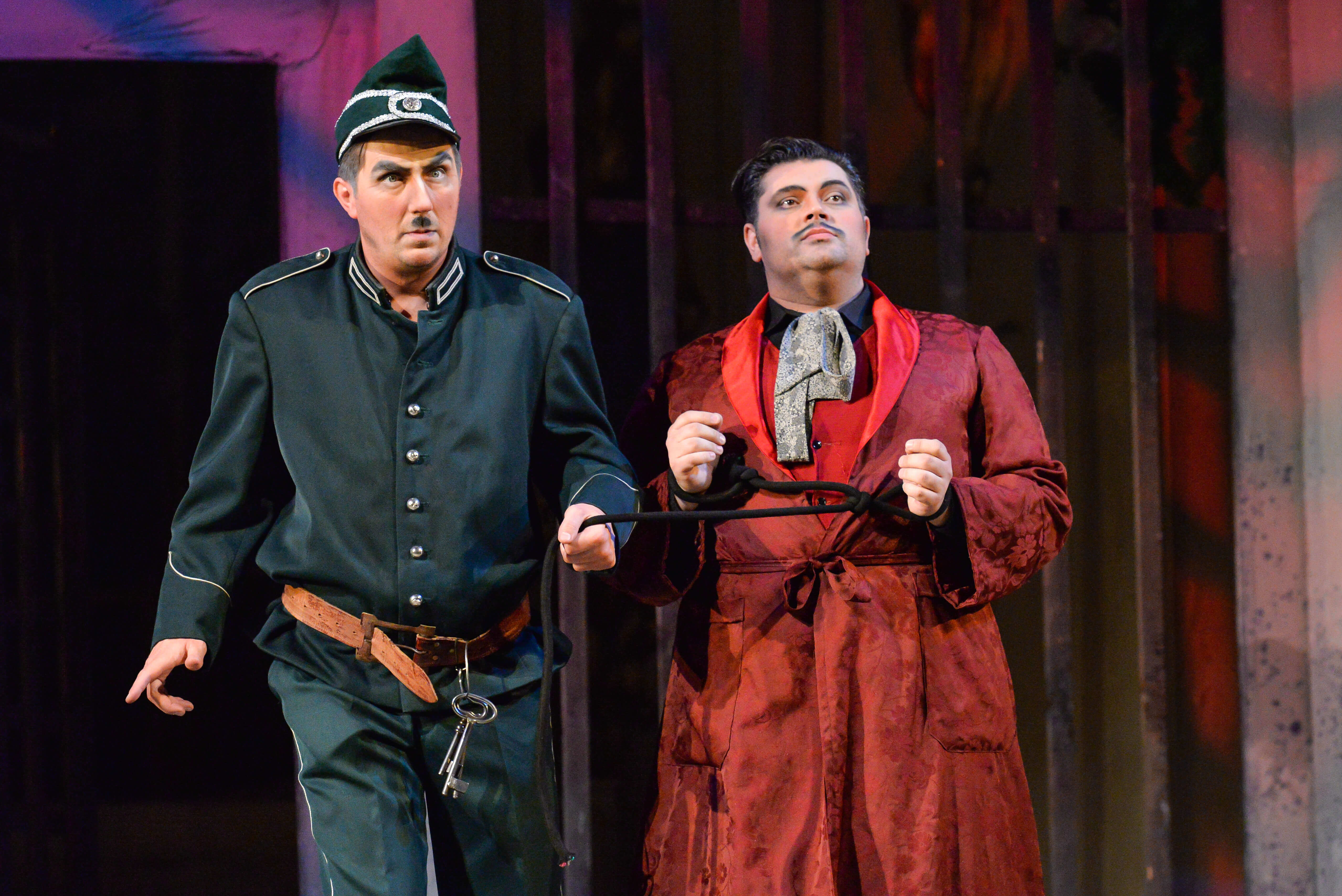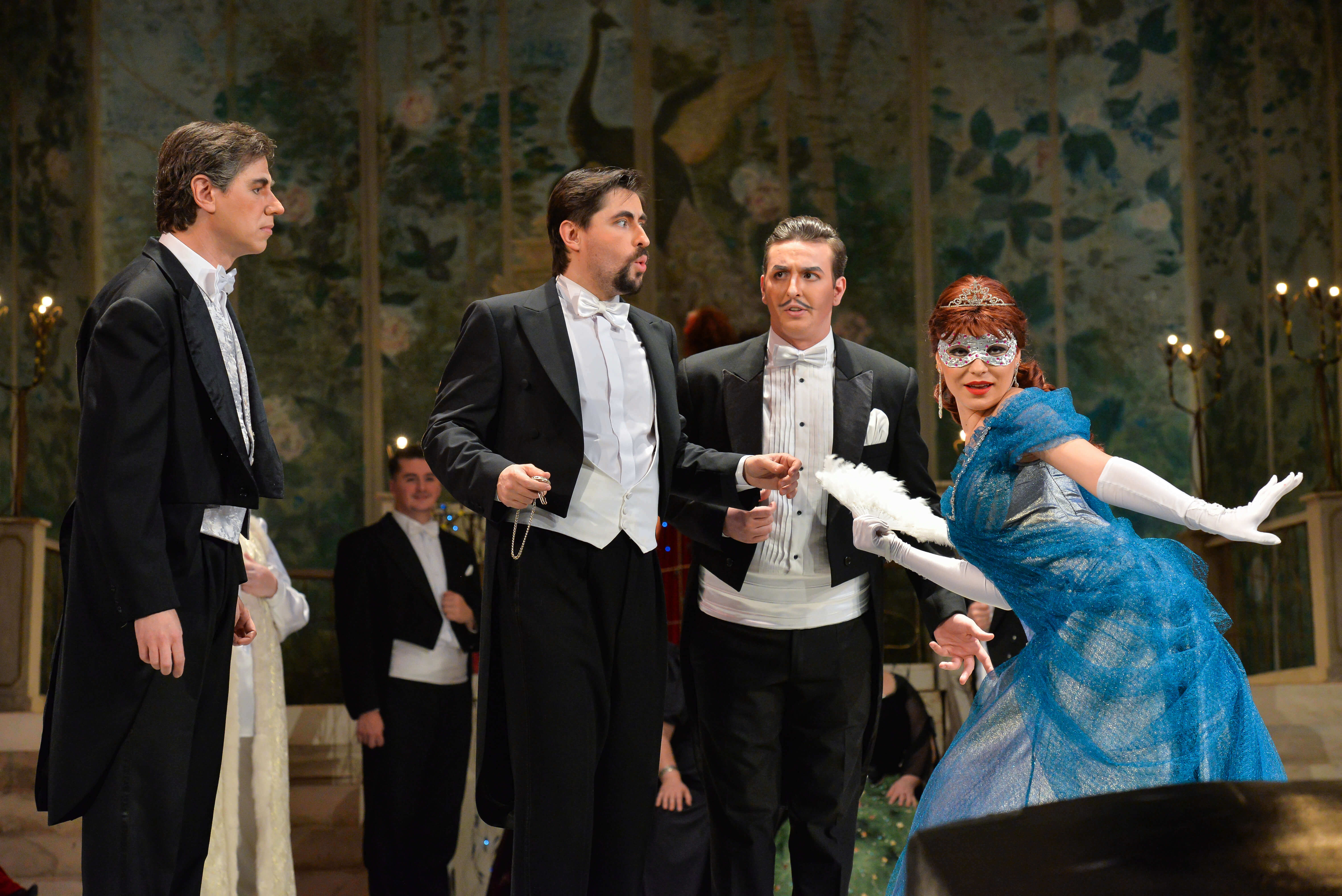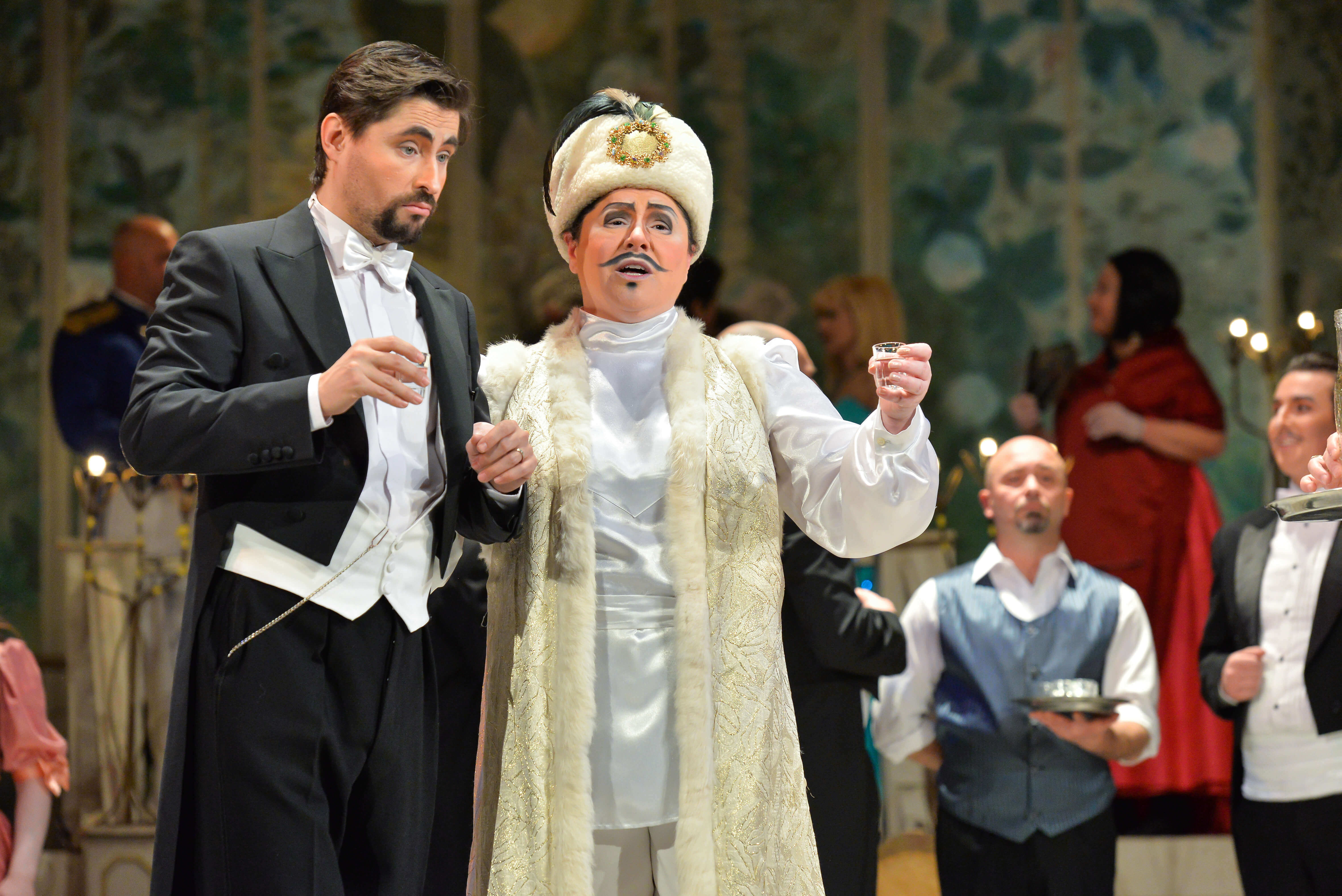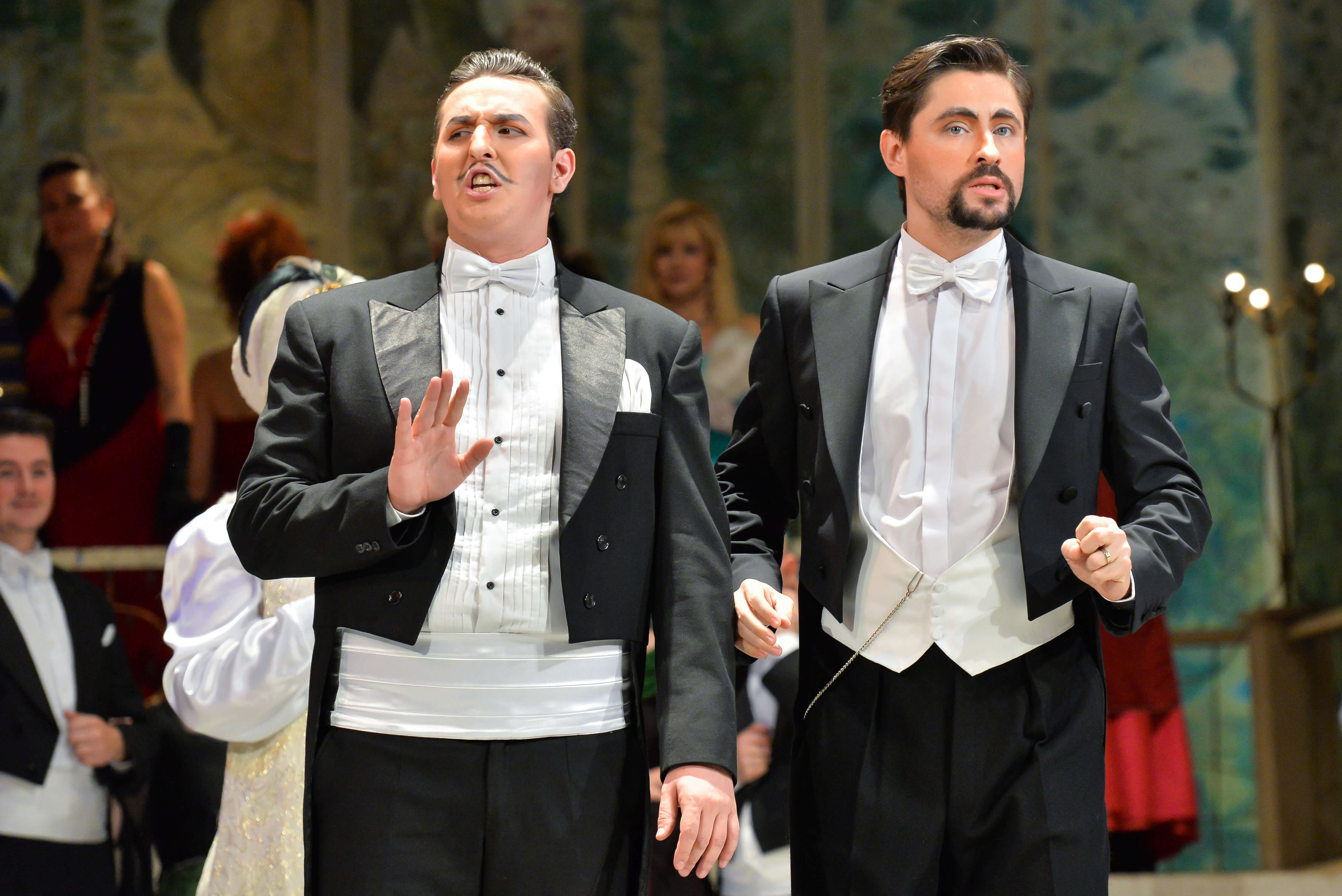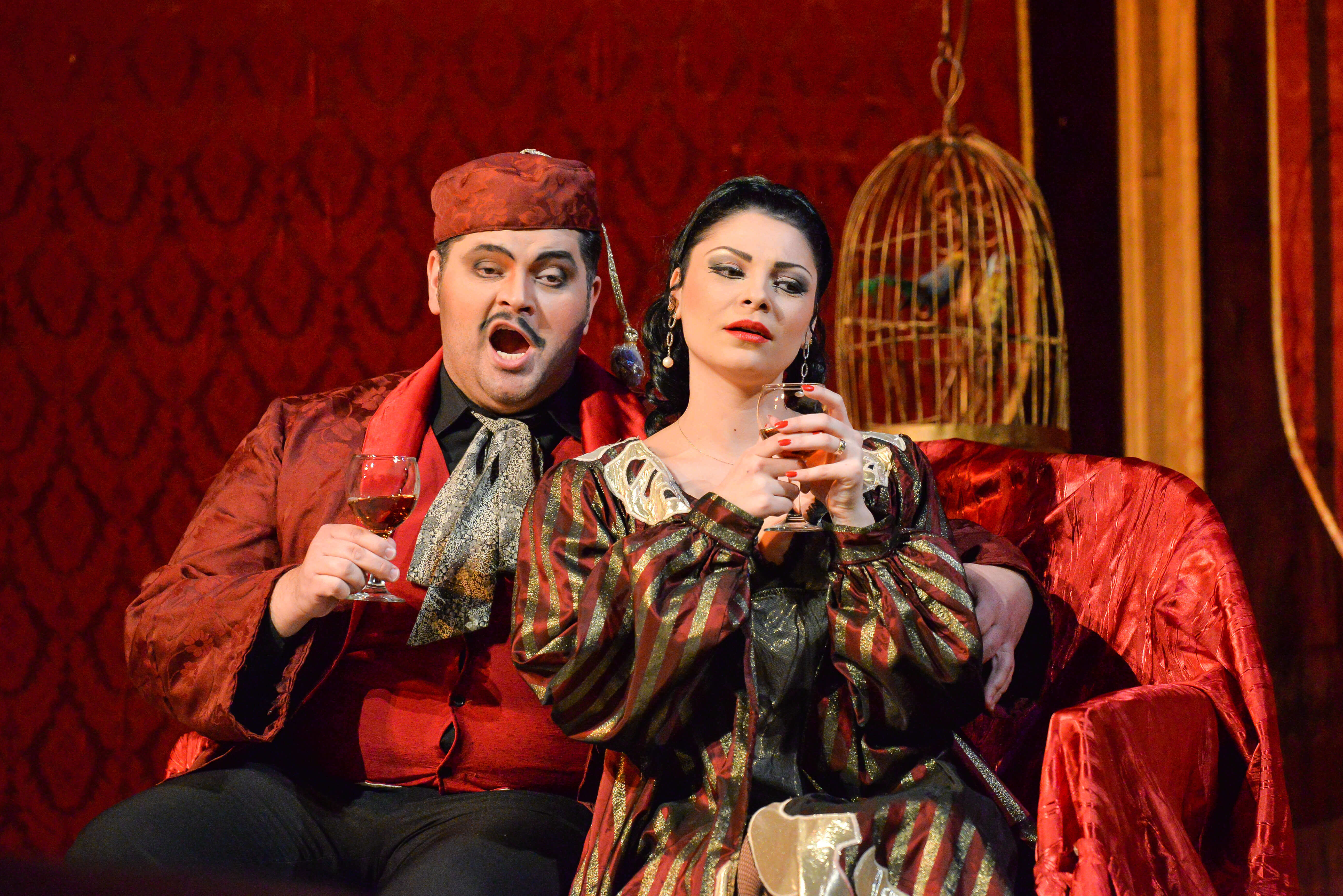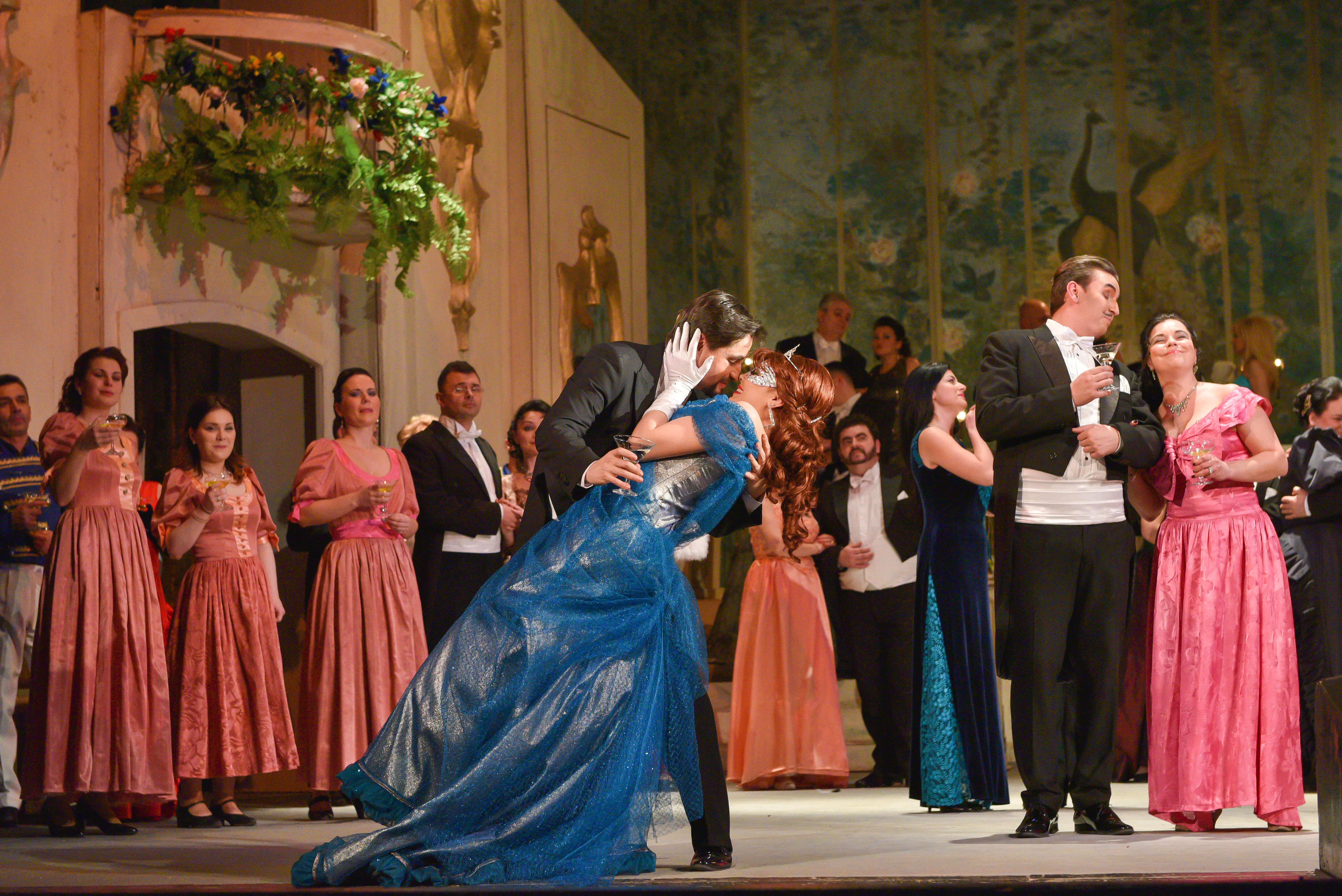
distribution
Artistic direction: Rodica Popescu Moisa
Scenography: Andrei Șchiopu
Choreography: Adrian Mureșan
Gabriel von Eisenstein, landlord: Andrei Manea
Rosalinde, his wife: Irina Săndulescu Bălan
Dr. Falke: Geani Brad
Adele, Rosalinde’s maid: Oana Trîmbițaș
Frank, the prison governor: Petru Burcă
Prince Orlofsky: Ștefania Barz
Alfred, tenor, the Prince’s teacher: Sorin Lupu (debut)
Dr. Blind, lawyer: Sebastian Balaj (debut)
Ida, Adele’s sister: Alexandra Topan (debut)
Frosch, the prison guard: Bogdan Cristian (guest)
Ivan Pavlovici, the butler: Dan Dumitrana
Little mice: Patricia Cenan, Diana Groza, Roxana Cociș, Iuliana Dane, Polina Stănescu, Petra Trăilă
Abigails: Cristina Toda, Enikö Fărcaș, Antonela Oancea, Cristina Boboc, Alina Negru, Raluca Perde
Boys: Radu Sântimbrean, Daniel Moga, Paul Cuibus, Tudor Stupar, Antonio Mon
The Orchestra, the Chorus and the Ballet Ensemble of the Romanian National Opera in Cluj-Napoca
Chorus master: Emil Maxim
Chorus conductor: Corneliu Felecan
Artistic direction adaptation: Mihaela Bogdan
Scenography adaptation: Anca Pintilie
Assistance choreography: Marius Toda
Stage and backstage direction: Dan Lupea
MUSICAL INSERTIONS:
Josef Strauss: Fast Polka "No worries" ("Ohne Sorgen" - Polka schnell) - op.271
Johann Strauss - son: Fast Polka "Luxury Train" („Vergnügungszug"- Polka schnell) - op. 281, Polka "Thunder and Lightning" („Unter Donner & Blitz” - Polka) - op. 324
description
show category: operetta
Operetta in three acts on a German libretto by Karl Haffner and Richard Genée
Performance played in Romanian
Recommended Age: 5+
After the wonderful musical supervision composer J. Strauss has himself signed for the absolute premiere from 5 April 1874, the operetta “The Bat” would further trigger humour and an unparalleled joie de vivre with every new performance. Tha charm of the vienese composer was highly appreciated by some of his contemporary composers, such as Johannes Brahms, whom is believed to having attended each and every performance of the operetta and Gustav Mahler has also brought distinction and complimented Strauss’ waltzes, in which he saw an “enchanting uniqueness and inventiveness”.
Once we enter the story of the operetta, the sumptuous masked ball comes to life and lights the Russian prince’s court, framing perfectly the racy encounters of the variously disguised characters: the rich bourgeois couple with marital problems, the wife’s maid and her demanding sisters, a talkative and righteous jailer. They all proceed in a humorous, symbolical journey, which starts in the dance saloon and ends in prison, and which provides various opportunities for farce and humour, but also for sincere emotions and a surprisingly realistic perspective upon life, scattered with abundant laughs and champagne.
“The Bat” is definitely the most beloved, lively and eagerly-awaited performance that heralds each New Year’s Eve. J. Strauss-son’s creation has been enjoyed for decades as a New Year’s lyric tradition, in opera theatres all over the world, and brings the same joy every time, the same electrifying and jocular atmosphere, in an enchanting, unforgettable performance!
The performance has two breaks and ends around 10.15 p.m.
photo gallery
NICU CHERCIU

